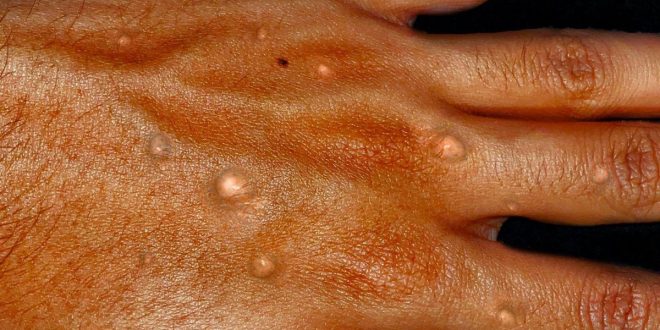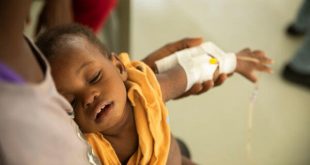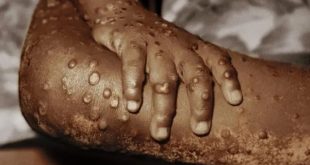Monkeypox, also known as mpox, typically begins with symptoms that are similar to those of the flu. The initial signs usually appear 6 to 13 days after exposure to the virus, although this incubation period can range from 5 to 21 days. The first symptoms often include:
Progression of symptoms:
After these initial flu-like symptoms, a characteristic rash usually develops 1 to 3 days later. The rash often starts on the face and then spreads to other parts of the body, including the palms of the hands and soles of the feet. The rash goes through several stages:
- Macules: Flat, red spots on the skin.
- Papules: Raised bumps that appear on the skin.
- Vesicles: Bumps filled with clear fluid.
- Pustules: Bumps filled with yellowish fluid.
- Scabs: The pustules eventually scab over and fall off, leaving the skin to heal.
The rash can be itchy or painful, and the severity can vary from person to person. The illness typically lasts 2 to 4 weeks, and most people recover fully, although in some cases, it can lead to complications.
Transmission of monkeypox:
Monkeypox is transmitted through close contact with an infected person or animal, as well as through contact with contaminated materials. Key modes of transmission include:
- Human-to-human transmission:
- Direct contact: Monkeypox is primarily spread through direct contact with the rash, scabs, or bodily fluids of an infected person. This can occur during close physical contact, including sexual contact.
- Respiratory droplets: Prolonged face-to-face contact can lead to the transmission of respiratory droplets from an infected person. However, unlike COVID-19, this mode of transmission typically requires extended close contact.
- Contaminated objects: The virus can also spread through contact with objects, fabrics (such as clothing or bedding), or surfaces that have been contaminated with the virus from an infected person.
Animal-to-human transmission:
- Bites or scratches: Monkeypox can be transmitted from animals to humans through bites or scratches from infected animals, particularly rodents and primates.
- Consumption of infected meat: Handling or consuming the meat of infected animals, particularly wild game (bushmeat), can also be a source of transmission.
Vertical T=transmission:
- Mother to fetus: The virus can be transmitted from an infected pregnant woman to her fetus via the placenta, which may result in congenital monkeypox.
Preventive measures include avoiding contact with animals that could harbour the virus, practising good hygiene, and avoiding close contact with infected individuals. Vaccination can also offer protection against monkeypox, particularly for those at higher risk of exposure.
 Top Naija News – Nigeria News, Nigerian News & Top Stories Top Naija News – Nigerian Newspapers, Nigerian News. topnaijanews is a daily Nigerian newspaper covering Latest News, Breaking News, Entertainment, Sports, Lifestyle and Politics.
Top Naija News – Nigeria News, Nigerian News & Top Stories Top Naija News – Nigerian Newspapers, Nigerian News. topnaijanews is a daily Nigerian newspaper covering Latest News, Breaking News, Entertainment, Sports, Lifestyle and Politics.




